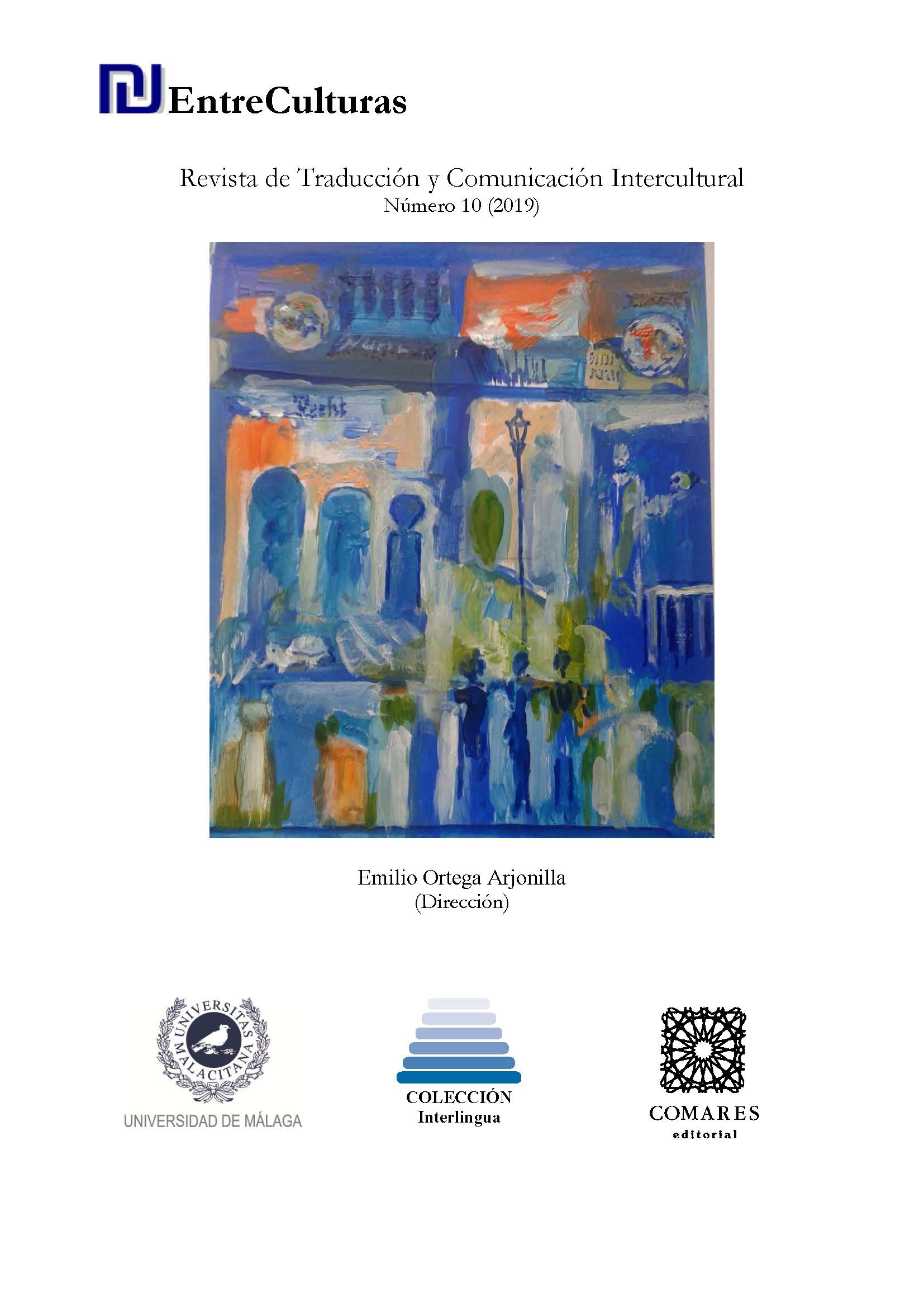Luis Buñuels' Tristana, or about the Importance of Bedroom Slippers and Pianos: Keys to an Intersemiotic Translation
DOI:
https://doi.org/10.24310/Entreculturasertci.vi10.12522Keywords:
Intersemiotic Translation, Ideologeme, Close reading, Tristana, Julia Kristeva, Jeanne Rucar, Luis BuñuelAbstract
The film text resulting from the intersemiotic translation of any literary text is intended either to continue or to transform the ideology conveyed by that literary text. Ideology, therefore, closely following Julia Kristeva, would not be a referential dimension that works outside the sign. Ideology has semiotic characteristics, it is inscribed in the text, giving rise to the ideologeme. If the ideologem is the confrontation between a particular textual organization and those statements with which it relates, then it is not difficult to understand that every translation, either interlinguistic or intersemiotic, is the place where the ideologem shines more intensely. After all, in every translation process there are always, needless to say, two texts at least. What interests us most in this study is to try to find out, what is ideologically behind these transformations in Luis Buñuel's film to ultimately infer that intersemotic translation is the most ideological one, the most flexible, the most manipulative of all types of translation.
Downloads
Metrics
References
Althusser, L. (1965). "Ideología y aparatos ideológicos del Estado", Escritos. Barcelona: Laia, (pp. 105-170).
Aub, M. (1985). Conversaciones con Buñuel seguidas de 45 entrevistas con familiares, amigos y colaboradores del cineasta aragonés. Madrid: Aguilar.
— (2013). Luis Buñuel, novela. Granada: Cuadernos del Vigía.
Buñuel, L. (1982). Mi último suspiro. Madrid: Plaza & Janés Editores.
Derrida, J. (1988). The Ear of the Other. Lincoln and London: University of Nebraska Press.
— (1987 a). "Des tours de Babel", Psyché. Inventions de l´autre. Paris: Galilée, (pp. 203-235).
Edwards, G. (2005). A companion to Luis Buñuel. Great Britain: Tamesis.
Geirola, G.(1993). "La Tristana de Luis Buñuel", Cuadernos Hispanoamericanos, (pp. 227-237).
Gibson, I. (2013). Luis Buñuel, la forja de un cineasta universal 1900-1938. Madrid: Aguilar.
Jakobson, R. (1959). "On Linguistic Aspects of Translation". On Translation, (pp. 232-239), Cambridge, Massachusetts: Harvard University Press.
Kristeva, J. (1968). Semeiotiqué. Recherches pour une sémanalyse. Paris: Seuil.
Miller, B. (1983). Women in Hispanic Literature: Icons and Fallen Idols. Berkeley: University of California Press.
Neuschäfer, H.J. (1994). Adiós a la España eterna: La dialéctica de la censura. Novela, teatro y cine bajo el franquismo. Barcelona: Anthropos.
Pardo Bazán, E. 1946 (1892). "Tristana", Obras Completas. Madrid: Aguilar, (pp. 1119-22).
Paz, O. (1971). Traducción: literatura y literalidad. Barcelona: Tusquets. Peña Ardid, C. (2004). "De la resignación a la ira: El punto de vista de las mujeres en el cine de Luis Buñuel". En I. Santaolalla, P. d´Allemand, J. Díaz-Cintas, P.W. Evans, C. Sanmateu, A. Whyte, M. Witt (edits.), Buñuel, siglo XXI, (pp. 369-378).
Pérez Galdós, B. (2003). Tristana. Madrid: Ediciones Akal.
Pérez Turrent, T. y De La Colina, J. (1993). Buñuel por Buñuel. Madrid: Plot.
Richart-Marset, M. (2009a). "Traducción intersemántica e intertextualidad. Shrek, del cómic al film". Prosopopeya: Revista de Crítica Contemporánea, 6, pp. 117-140.
— (2009 b). La alegría de transformar. Teorías de la traducción y teoría del doblaje audiovisual. Valencia: Tirant lo Blanch.
— (2012). Ideología y traducción. Por un análisis genético del doblaje. Madrid: Biblioteca Nueva.
— (2015). "La censura de la corrección política: la traducción audiovisual a escena". En G. Zaragoza Ninet, J.J Martínez Sierra y J.J Ávila-Cabrera (edits.), Traducción y Censura. Nuevas perspectivas (pp. 237-257). València: Publicaciones de la Universitat de València.
Rucar, J. (1990). Memorias de una mujer sin piano. Escritas por Marisol Martín del Campo. Madrid: Alianza editorial.
Sandro, P. (1987). Diversions of Pleasure: Luis Buñuel and the Crises of Desire. Columbus, Ohio State UP.
Scarry, E. (1987). The Body in Pain: The Making and Unmaking of the World, New York, Oxford UP.
Venuti, L. (1992). Rethinking Translation. Discourse, Subjectivity, Ideology. London and New York: Routledge.
Voloshinov, V. N. (1929). El Marxismo y la filosofía del lenguaje. Madrid: Alianza editorial.
Downloads
Published
How to Cite
Issue
Section
License
All contents published in Entre culturas. Revista de traducción y comunicación intercultural are protected under the Creative Commons Attribution-NonCommercial-ShareAlike 4.0 International (CC BY-NC-SA 4.0) license. All about this license is available in the following link: <http://creativecommons.org/licenses/by-nc-sa/4.0>
Users can copy, use, redistribute, share and exhibit publicly as long as:
- The original source and authorship of the material are cited (Journal, Publisher and URL of the work).
- It is not used for comercial purposes.
- The existence of the license and its especifications are mentioned.
There are two sets of authors’ rights: moral and property rights. Moral rights are perpetual prerogatives, unrenounceable, not-transferable, unalienable, imprescriptible and inembargable. According to authors’ rights legislation, Entreculturas. Revista de traducción y comunicación intercultural recognizes and respects authors moral rights, as well as the ownership of property rights, which will be transferred to University of Malaga in open access. The property rights are referred to the benefits that are gained by the use or the dissemination of works. Entreculturas. Revista de traducción y comunicación intercultural is published in an open access form and it is exclusively licenced by any means for doing or authorising distribution, dissemination, reproduction, , adaptation, translation or arrangement of works.
Authors are responsable for obtaining the necessary permission to use copyrighted images.





7.png)
